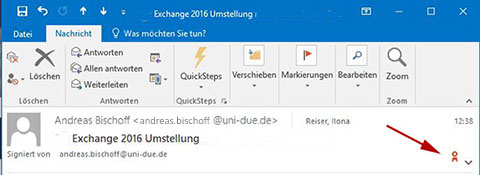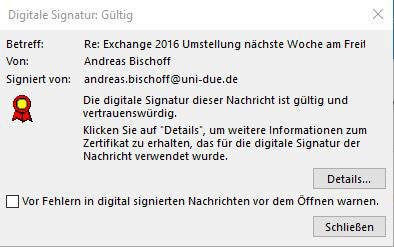Electronic Signatures and Encryption of E-Mail Traffic
Secure, Signed and Secure E-Mail
From a technical standpoint, you can compare an e-mail to a regular letter written on paper. The sender’s address is not verified on a letter as well as an e-mail. Using an electronic signature (like using a handwritten signature) is a surefire way to be certain that an e-mail really was sent by a sender and has not been faked during delivery. The electronic signature is created from a personal certificate of a sender.
In cooperation with the DFN-association, we offer personal certificates, that are suited for signatures as well as e-mail encryption. Three steps are necessary to prepare your e-mail client for sending signed and encrypted mails.
The ZIM recommends to only send signed e-mails and to set this process as standard in your e-mail client.
Information on the DFN-PKI infrastructure.
Two Steps To Your Personal Certificate
- Step 1
Request a personal certificate - Schritt 2
Configure your e-mail client with the personal certificate: Import certificate.
Under this link it is also described how to sign and encrypt an e-mail.
Recognize Signed E-Mails
You can see if an e-mail is signed in Outlook by looking at the little check mark (marked with an arrow in the picture below):

When you click on the check mark, the client will show you if the signature is verified:

In Thunderbird (marked red as well):

A click on the sealed envelope reveals details of your certificate.



